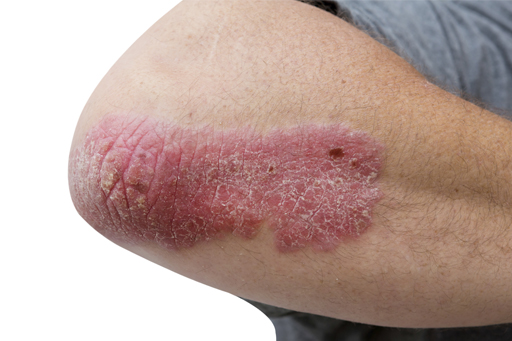OTC

Under the skin
In OTC
Bookmark
Record learning outcomes
Skin diseases can have a profound effect on quality of life, but pharmacy teams can support customers to manage their conditions and get the help they need
According to a recent survey by the British Skin Foundation (BSF), 60 per cent of British people currently suffer from or have suffered from a skin disease at some point during their lifetime. Skin diseases range from mild to severe, but all can have a significant emotional, as well as physical, impact. Seven in 10 people said they have visible scars or visible skin conditions, with 72 per cent saying they affect their confidence.

Despite the prevalence of skin problems, many people don’t seek the medical help they need or understand how to help themselves. In the BSF survey, 28 per cent of the population admitted to suffering from acne at some stage. Of those, 39 per cent admitted they don’t know how to handle it. “Acne is a treatable skin disease and it is important to seek help early,” says consultant dermatologist Dr Anjali Mahto. “No one should have to suffer in silence, and early access to a family doctor or dermatologist is key. Although not life-threatening, the damage acne can cause should not be underestimated. It can lead to scarring of the skin in addition to having profound effects on self-esteem. It is important to deal with these at an early stage to prevent lasting physical and psychological effects.”
Common problems
According to the Royal College of GPs, around 90 per cent of skin conditions can be managed in primary care. For many people, pharmacies are the first port of call for lifestyle advice and over-the-counter (OTC) products. “Community pharmacists play a valuable role in helping patients with chronic skin conditions,” says Dr Nisith Sheth, consultant dermatologist and BSF spokesperson. “They can advise on common OTC products like emollients, as well as how to apply prescription products, and recommend when patients should see their GP or a specialist.”
According to Dr Christine Clark, an independent pharmacy consultant with special expertise in dermatology, it’s important that pharmacists and pharmacy staff understand how each skin condition should be managed so that they know when to advise a customer to make an appointment with their GP.
- Acne
Acne is particularly common in teenagers as it is often triggered by fluctuating hormonal changes around puberty, but it can affect adults as well. According to NHS Choices, acne affects around 80 per cent of people aged 11-30 years. The main symptoms are blackheads and whiteheads, pus-filled spots, oily skin and sometimes inflammation. Acne most commonly affects the face, neck, back and chest.
Most people can control their acne with OTC treatments, especially benzoyl peroxide creams or gels, or natural alternatives (e.g. those containing tea tree oil), alongside a regular skincare routine. However, if their symptoms are severe or are causing emotional distress, customers should be referred to their GP as they may need antibiotics and/or stronger topical treatments.
- Dry skin and eczema
Many people notice patches of dry skin from time to time. They can usually manage these with a daily moisturiser. If someone has eczema, however, the protective outer layer of skin may not produce enough of the necessary oils and become damaged so that it no longer retains moisture. This may allow allergens, irritants and bacteria to penetrate the skin, leading to significant inflammation and a risk of infection.
Eczema often develops for the first time in babies, but it can affect all age groups. The symptoms may flare up and down and include dryness, flaking, itching, inflammation and sometimes weeping skin.
Eczema can usually be easily managed with a good skincare routine that ensures the skin is moisturised at all times. Emollient creams, lotions and/or ointments are the mainstay treatment, rehydrating and protecting the skin from moisture loss. These should be applied liberally and regularly throughout the day. Many customers benefit from emollient bath and shower products as well. This multi-product regimen is known as complete emollient therapy. A GP may prescribe a topical steroid cream or ointment for inflamed areas, but this needs to be applied thinly and sparingly.
- Psoriasis
Affecting around two per cent of the population, psoriasis causes patches (plaques) of pink or red, itchy and sometimes inflamed skin with silvery-white scales. It is especially common on the knees, elbows, hands, feet, scalp and back. Stress, infections, alcohol and/or smoking may trigger flare ups.
Mild to moderate psoriasis is often treated with emollients, coal tar products and prescribed topical corticosteroids to reduce the inflamed, thickened scaly patches. Very mild psoriasis may respond to emollients alone, but these need to be applied liberally and frequently. Different treatments may be recommended for different body sites. Up to 80 per cent of people with psoriasis have scalp symptoms that require special treatments, some of which can be sold over the pharmacy counter. Severe psoriasis requires specialist treatments that are available from a dermatologist.

- Rosacea
Rosacea affects one in 10 people in the UK, especially those with fair skin, people aged 40-60 years and those who blush easily. It mainly causes flushing of the face, but can lead to permanent redness, pus-filled spots and visible blood vessels. The rash and flushing can be very embarrassing, lowering self-esteem and self-confidence and causing people to avoid social gatherings.
If customers are prone to rosacea, they may be able to reduce flare ups by avoiding common triggers, such as spicy food, alcohol, strenuous exercise, changes in temperature, stress or anxiety. Some skincare products are available, but many people require prescribed treatments. Patches of red skin may be disguised using special camouflage make up.
- Cold sores
Cold sores are caused by the herpes simplex virus, which lies dormant in the body until it’s triggered by an infection, stress, tiredness, strong sunlight or, in women, hormonal changes. An outbreak begins with a tingling, itching or burning sensation around the mouth. Small fluid-filled sores then develop, usually on the lower lip. These ooze before crusting and scabbing over within 48 hours of the initial tingling sensation.
Most cold sores disappear within seven to 10 days without treatment, but they can be unsightly. Antiviral creams can ease the symptoms and speed up the healing process. These are widely available OTC, but must be used as soon as the first tingling sensation appears. Good hygiene is essential to stop the spread of the cold sores. If cold sores are severe or recurrent, customers should be referred to their GP.
- Pigmentation problems
Skin that is darker than normal is caused by an increase in melanin, the pigment responsible for skin colour. This may be triggered by sun damage, pregnancy or even some antibiotics and antimalarials. Skin lightening creams are available on prescription.
Patches of skin that are paler than normal are caused by too little melanin and are most commonly seen with vitiligo, which affects around one per cent of the world’s population. Vitiligo may be triggered by an autoimmune condition. It usually affects specific areas of the body, such as the face, neck, hands and skin creases. The white patches are usually permanent, but customers can use skin camouflage products to cover them up.
Customers with pigmentation problems should be advised to avoid sun exposure and to wear a sunscreen with UVA and UVB protection every day – not just in the summer.
Counter talk
Not all customers will have seen their GP about their symptoms before visiting the pharmacy, and many will be seeking advice. While it’s important to encourage customers to discuss their skin problems in as much detail as possible, pharmacy staff need the confidence to discuss sensitive issues.
“If pharmacies have a good display, including sample packets and information leaflets, this will create an anchor for discussion, says Dr Clark. “Some people may ask for advice directly, or bring a product to the pharmacy counter. It is important that pharmacy staff know about the product ranges stocked, including their critical ingredients and how they fit in with the physiology of the skin condition. If customers know a pharmacy has an interest in skin conditions and stocks specialist products, this will build on its reputation and they will come back for advice again.”
Depending on space, pharmacies should stock a range of products for common skin diseases, rather than just the basics. It often takes trial and error for people to find the best combination of products to clear up their symptoms. Customers may be bewildered by the wide array of emollients for dry skin conditions, for example, and choosing the wrong product or format can affect compliance. If the user doesn’t like the selected emollient, they are unlikely to reapply it regularly.
Even if customers are using prescription products for their skin disease, they may benefit from using OTC products as well. “When offering advice, pharmacists and pharmacy staff may need to build on what has already been prescribed,” says Dr Clark. “For example, ask customers if they would like an oil-free moisturiser if they have a prescription for acne. If a customer is prescribed a topical steroid for eczema but not an emollient, pharmacists could explain how an emollient can improve the absorption of the steroid and recommend a suitable product.”

Emotional impact
It’s not unusual for people with skin diseases to experience depression and anxiety, and many of them may find that stress and emotional upsets aggravate their symptoms. Yet skin conditions may be dismissed as trivial by other people, including some healthcare professionals. In July 2016, experts from the Severe Eczema and Psoriasis Team at St. John’s Institute of Dermatology, Guys’ and St Thomas’ NHS Foundation Trust, warned that the need for psychological support amongst dermatology patients is not being met.
“It’s well recognised that living with a skin condition can have a massive impact on an individual’s outlook on life,” says consultant psychodermatologist Dr Anthony Bewley. “Small problem areas do not necessarily mean a small impact on day-to-day living. Even skin conditions that are usually hidden under clothing can have an effect. Often, people can feel very alone and as though there are no effective options out there. However, there are usually very effective treatments for many skin conditions, and appropriate support available.”
Signposting to support services is an important part of any pharmacy consultation, but especially with visible conditions such as skin disease. “Make customers aware that they are not alone and that help is available,” says Dr Sheth. “Charities such as the British Skin Foundation and Changing Faces are a great place to start. The British Association of Dermatologists also has great patient information. GPs and consultant dermatologists on the General Medical Council Specialist Register can give more specific advice on skin conditions.”
Skin cancer awareness
Seven people die from skin cancer every day in the UK, and over 100,000 new cases of skin cancer are diagnosed in the UK each year. The rates of malignant melanoma are rising faster than any other type of common cancer, and it’s not just older age groups that are affected. At least two 15-34 year olds are diagnosed with malignant melanoma every day in the UK.
In a recent British Skin Foundation survey, 85 per cent of people admitted to being sunburnt three times or more in their lifetime. One in 10 also confessed that they don’t wear SPF30 or more sunscreen when they’re abroad, and more than a fifth of people said they forgot to reapply sunscreen every two hours or after swimming while on holiday. Customers should be warned that any sun exposure can increase their risk of skin cancer. In January, research published in the British Journal of Cancer revealed that working in the sun could lead to one death and around five new cases of melanoma every week.
“We all need some sun for healthy bones, but too much can increase the risk of skin cancer, and the risk can be higher for some people,” says Sarah Williams, Cancer Research UK’s health information manager. “Generally, the best ways for people to protect their skin is to spend time in the shade between 11am and 3pm, and cover up with clothing. Also, use sunscreen with at least SPF15 and four or more stars on the parts of the body they can’t cover, like the face and hands.”
Pharmacy customers will know what their own skin looks and feels like, so they should notice any changes. Skin cancer can appear as a new mole or mark, or it can be a change in something that’s been there for a while. Things to look for include:
- Moles that are growing or changing shape
- Moles that are developing new colours
- Moles that are inflamed, bleeding or red around the edges
- Moles that are particularly itchy or behaving unusually.
